B2B keyword research isn’t about chasing high-volume terms.
You want to find low-volume, high-intent, niche keywords that connect with your audience’s goals.
In this guide, I will walk you step-by-step through what my typical B2B keyword research process looks like.
By the end, you’ll have a list of actionable keywords mapped to your content strategy.
Plus, I’ve created a checklist and template you can use as you follow the guide.
Checklist: Your B2B Keyword Research Workflow
Understand Your Market and Audience
- Define your Ideal Customer Profile (ICP).
- Identify pain points, challenges, and goals for different stakeholders (executives, managers, end-users).
- Gather insights through customer surveys, CRM data, and support tickets.
- Research forums (e.g., Reddit, Quora) and competitor reviews (G2, Capterra) for common themes.
Generate Seed Keywords
- Brainstorm core terms that define your product, service, or industry.
- Use tools like ChatGPT for keyword inspiration, but validate results with SEO data.
- Leverage Google Search Autocomplete, People Also Ask, and Related Searches for additional ideas.
Analyze Competitor Keywords
- Identify competitors.
- Do keyword gap analysis to find untapped opportunities.
- Note high-performing keywords your competitors rank for, but you don’t.
Categorize Keywords by Search Intent
- Determine the intent behind each keyword: Informational/ Commercial/ Transactional/ Navigational
- Prioritize Keywords
- Use Semrush’s Keyword Overview to filter keywords by Search Volume, Keyword Difficulty (KD), and Relevance.
Cluster Keywords into Related Groups
- Group keywords that share similar themes or intent.
- Map Keywords to Funnel Stages and Content Types
- Assign each keyword cluster to a stage in the buyer journey: ToFu/ MoFu/ BoFu
- Create content tailored to each stage.
- Validate Keywords with SERP Analysis
- Check SERPs for each target keyword to confirm search intent.
Get this free B2B keyword research template and fill it with keywords as you follow the guide.
Step-By-Step Guide to B2B Keyword Research
Step 1: Understand Your Market and Audience & Create ICPs
B2B buyers have a longer and more intricate journey compared to B2C, which is why you must build an Ideal Customer Profile (ICP) for effective keyword research.
It shouldn’t just define who your best prospects are overall but also guide you in targeting potential customers at every stage of the funnel.
Here’s how to create an ICP that’s detailed, actionable, and truly effective:
a. Define Your Ideal Customer Profile (ICP)
Before you begin keyword research, you need to clearly understand your market and audience.
Start by identifying the companies and decision-makers most likely to benefit from your product or service.
Ask yourself these questions:
↳ Which industries thrive with your solution, and what size companies typically have the budget and need for it?
↳ Where are your ideal customers located, and what level of financial commitment can they make?
↳ What are their pain-points and the challenges they face? What are their purchasing habits?
To gain these insights:
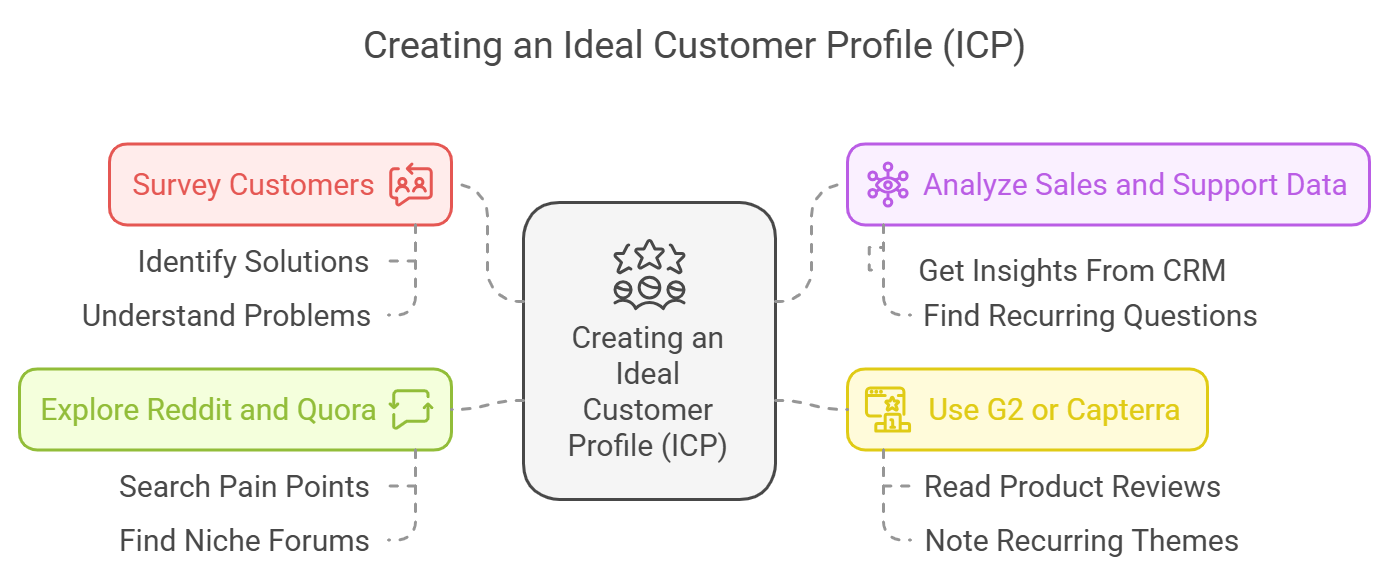
➜ Survey Customers: Ask existing or past customers how they found your solution and what problems they were trying to solve.
➜ Analyze Sales and Support Data: Get insights from CRM team to find recurring questions or objections.
➜ Use G2 or Capterra: Read reviews for your and competitors products to and note recurring themes and language.
➜ Explore Reddit and Quora: Search for forums and threads where your target audience discusses their pain points. Also, if you can, find forums dedicated to your niche.
For example, if you offer a cloud management tool, you might find that many companies are trying to “reduce cloud costs” or “optimize SaaS spending.”
These pain points can then inspire seed keywords like “cloud cost optimization tools” or “SaaS budget management software.”
b. Map Your ICP to the Buyer’s Journey (ToFu, MoFu, BoFu)
Now, try to understand how they behave throughout their journey from awareness to decision-making. Here’s how you can fine-tune your ICP for every funnel stage:
1. Top of Funnel (ToFu): Awareness
The idea is to find a wide net of potential prospects who are just starting to explore solutions.
Identify companies that may not yet know they need your solution but are experiencing relevant challenges.
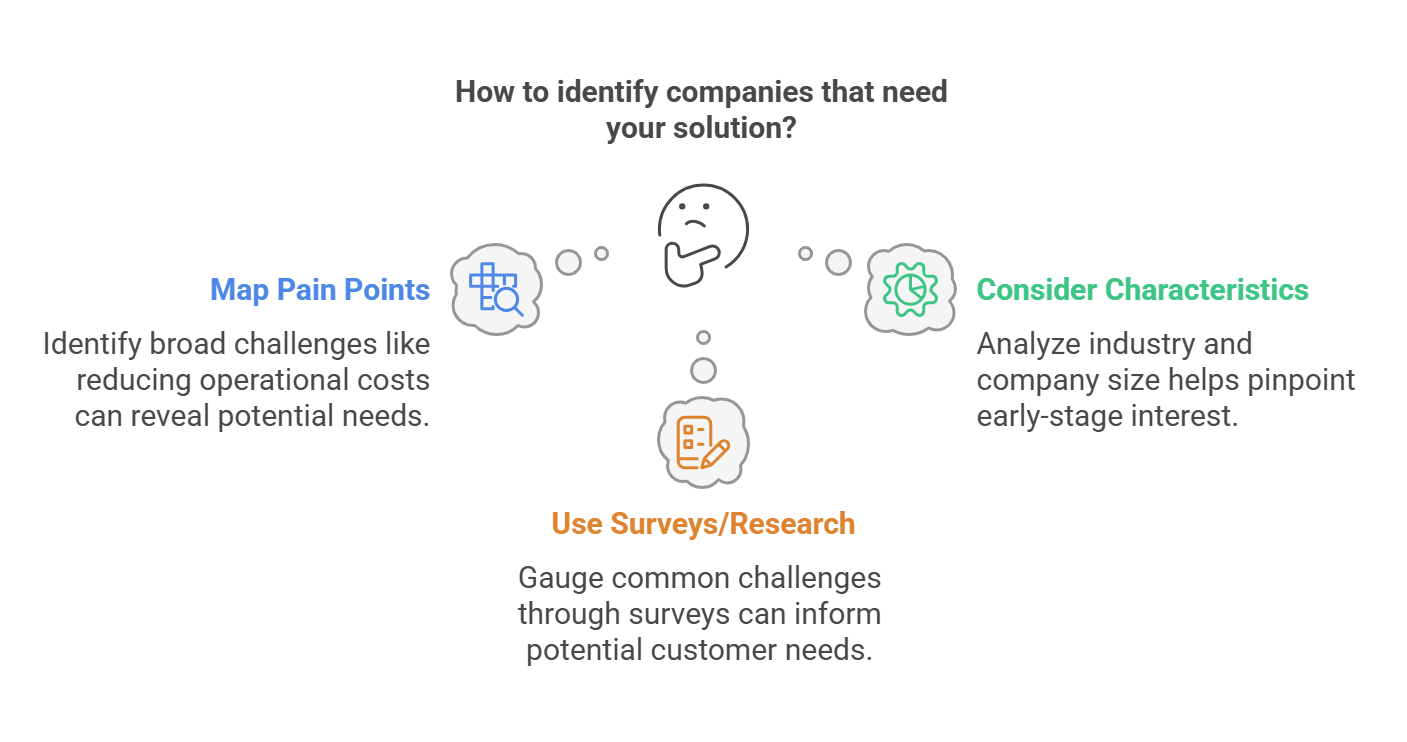
Here’s how to do it:
↳ Map broad pain points (e.g., “how to reduce operational costs”).
↳ Consider characteristics like industry and company size that signal early-stage interest.
↳ Use surveys and market research to gauge common challenges your potential customers face before making a purchase decision.
2. Middle of Funnel (MoFu): Consideration
At this stage, you need to engage prospects who are evaluating different solutions and actively comparing options.
Zero in on decision-makers and influencers within your target accounts.
Develop detailed buyer personas that outline the challenges, goals, and information needs specific to each role. Use this template:
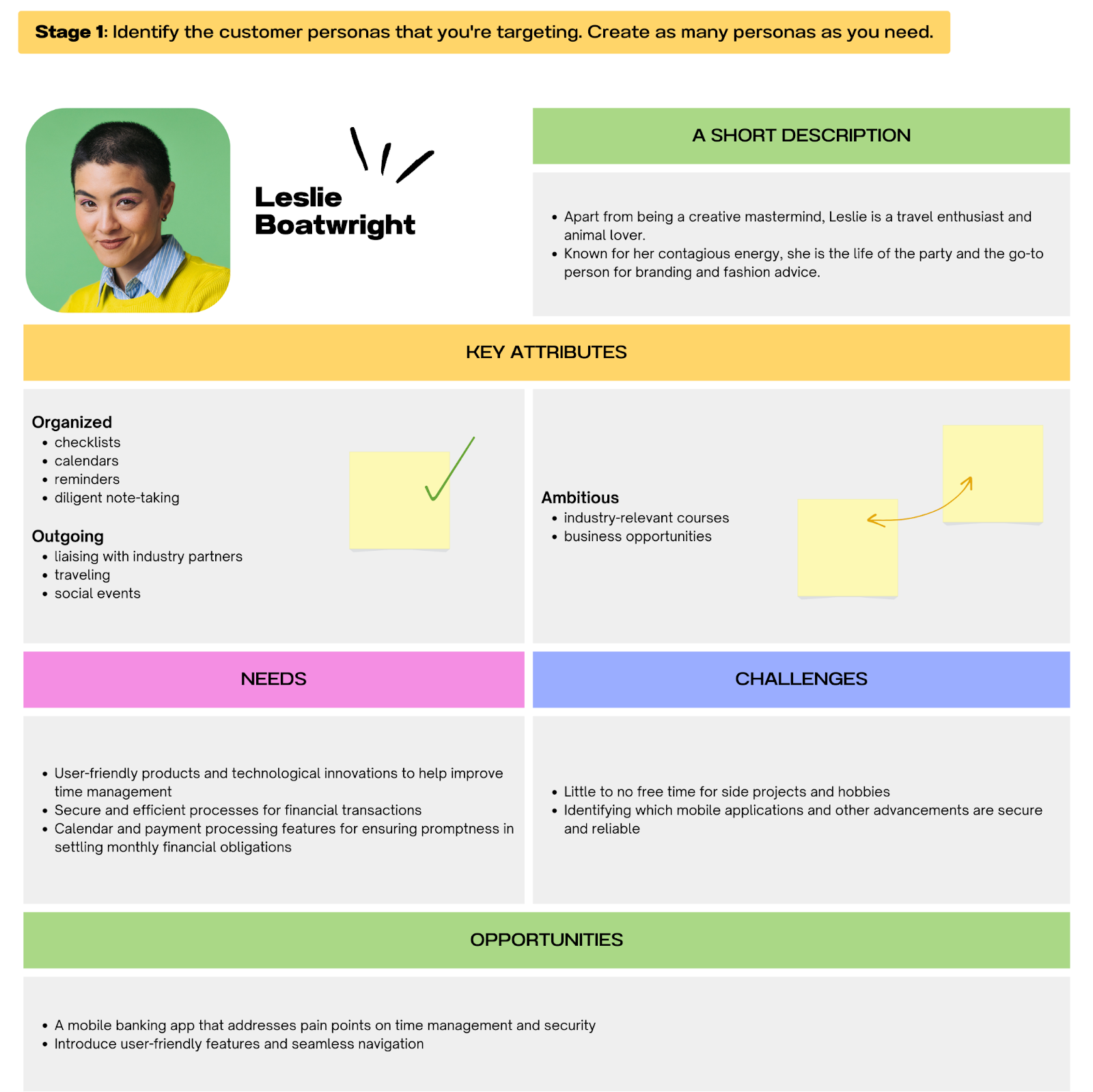
To fill this ICP template:
↳ Interview current customers or industry experts to understand the unique concerns and responsibilities of roles such as IT managers, operations directors, or procurement specialists.
↳ Analyze CRM and support data to identify questions these decision-makers typically ask.
↳ Craft messaging that speaks directly to their role-specific challenges, such as “How can our tool streamline your project management?” or “What features help optimize cloud usage?”
3. Bottom of Funnel (BoFu): Decision-Making
The bottom of the funnel aims at converting engaged prospects by addressing final purchase considerations.
Identify the specific criteria and objections that decision-makers have before making a final commitment. This might include budget constraints, ROI expectations, and risk management.
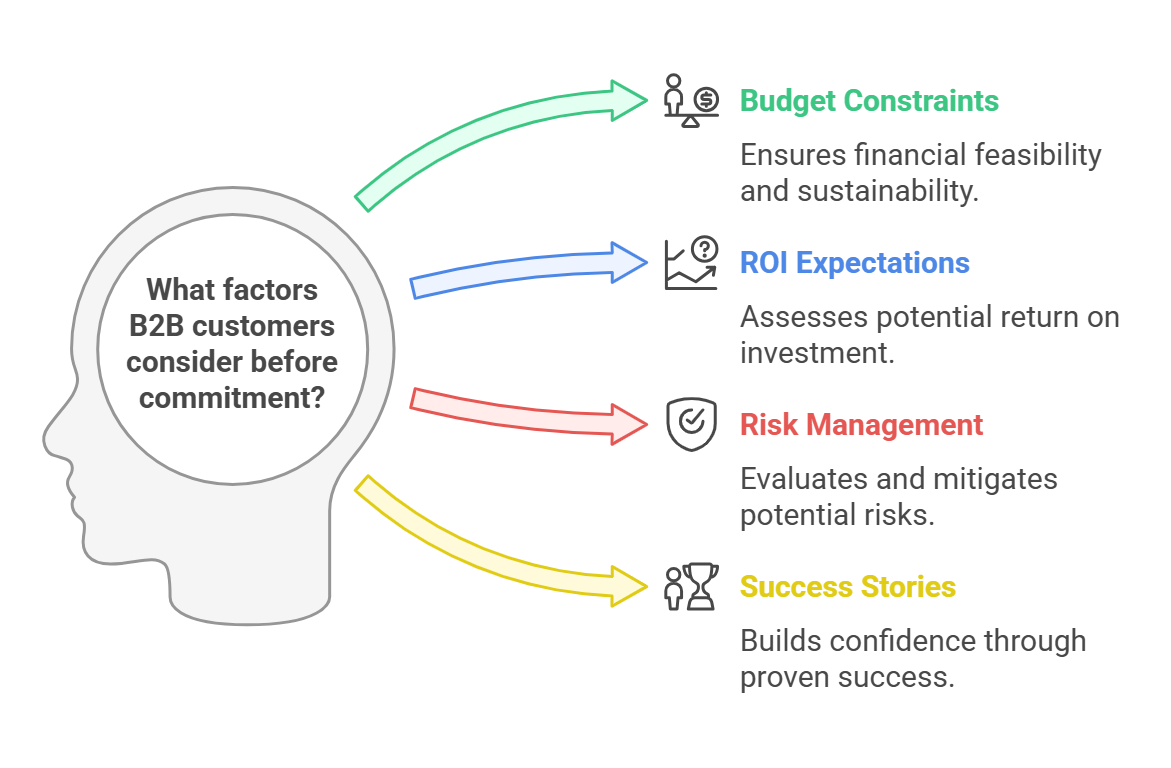
Take a note of:
↳ Success stories, case studies, or testimonials that resonate with key decision-makers.
↳ Common questions (e.g., “Why our SaaS cost optimization tool offers unmatched ROI”).
↳ Content such as product demos, free trials, or in-depth feature comparisons that help prospects feel confident in their decision.
Bring it all together
At the end of it, you’ll have actionable ICPs that span the buyer’s journey. It’ll help fine-tune your keyword research and overall marketing and sales efforts to address your potential buyers’ evolving needs at different touch points.
Step 2: Generate Seed Keywords
Seed keywords are broad terms that describe your product, service, or industry. This is where your keyword research starts.
a. Brainstorm Core Terms:
At this point, just simply think of 2-3 words long terms that define your product/service offerings. For a project management tool, it could be:
➜ project management software
➜ team collaboration tools
➜ project tracking for enterprises
➜ agile task management tools
You can also use ChatGPT to brainstorm keyword ideas. You could just input something as simple as:
Generate seed keywords for [your B2B product/service]
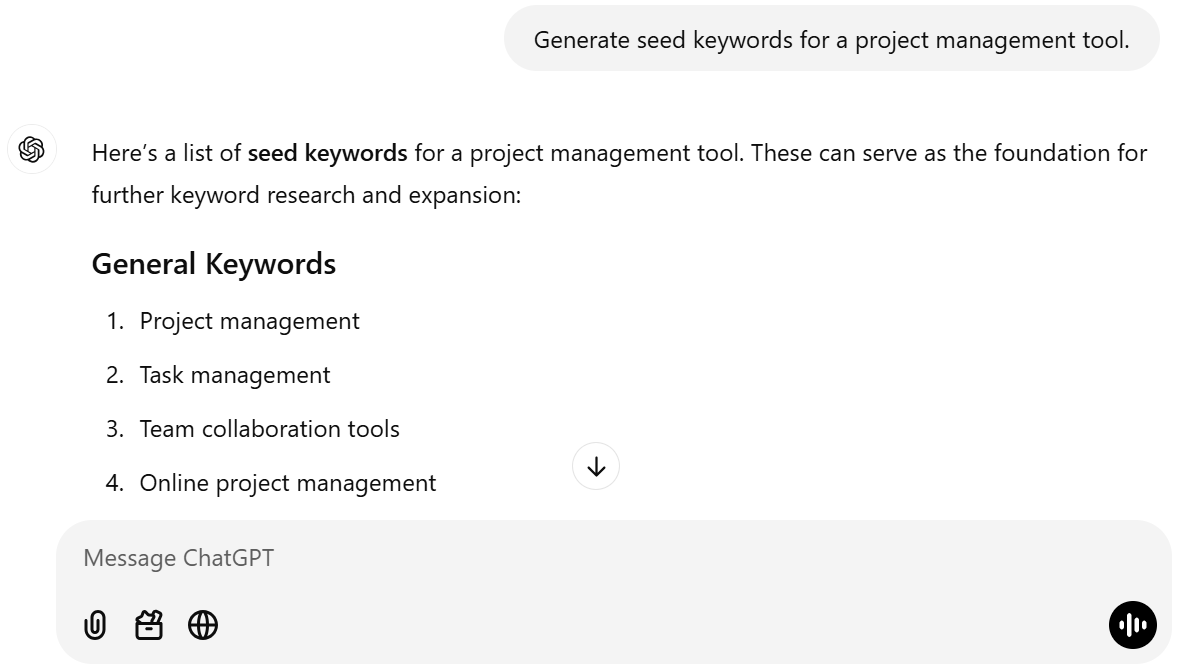
It’s given me some good suggestions.
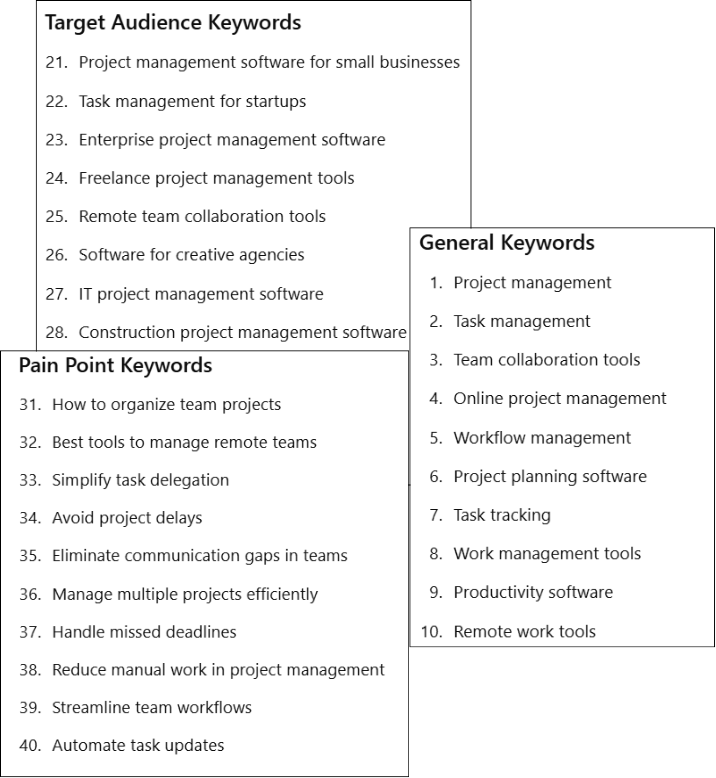
But it’s important to remember that these suggestions are not based on any SEO data. So, I use it only for inspiration.
b. Find Keyword Ideas with Google Search Autocomplete
Go to Google.com and start typing your seed keyword.
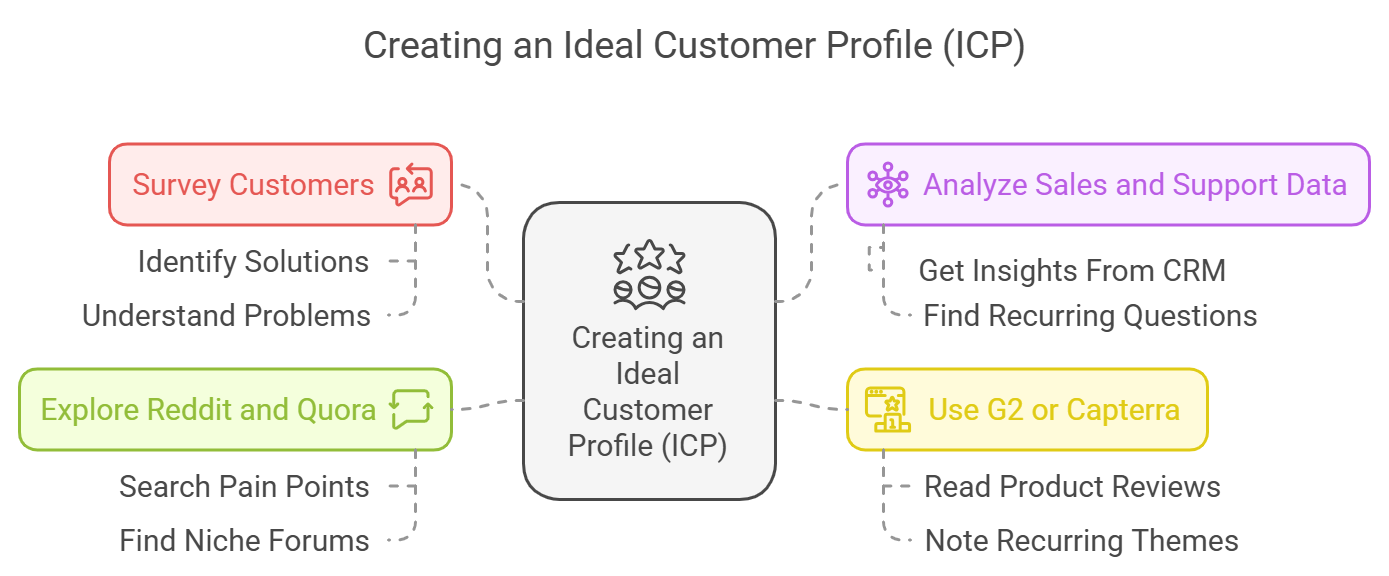
Note down suggestions that are relevant to your product/service offerings.
These keyword ideas are much more potent because the suggestions are based on actual searches that people make when using these keywords.
c. Find Question-Type Keywords in People Also Ask Section
Google your seed keyword and on the SERP, scroll down to the PAA section.
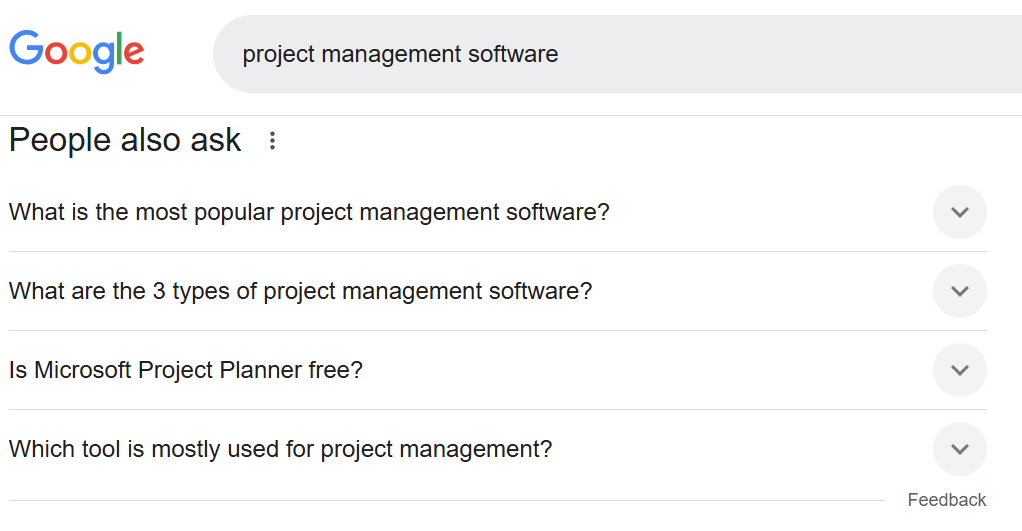
These are the questions that your target audience is asking. Note down questions that are relevant to your business. You can reveal more related questions by clicking on any relevant question.
d. Find Related Searches
Scroll down to the bottom of the SERP.
In the People also search for section, you will see what other queries people make that are related to your searched term.
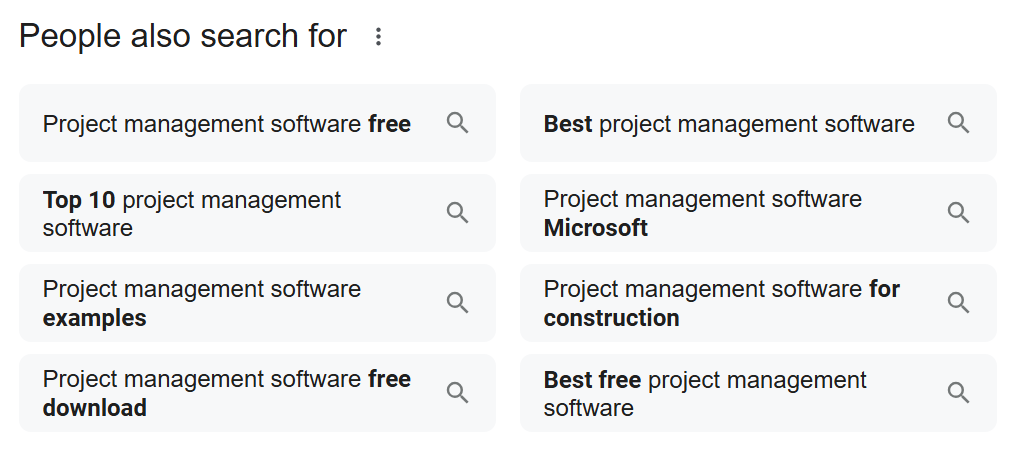
Note down queries relevant to your product/service.
e. Find Keyword Suggestions with Semrush Keyword Magic Tool
Open Semrush Keyword Magic Tool, enter a seed keyword, select your target country, and hit Search.
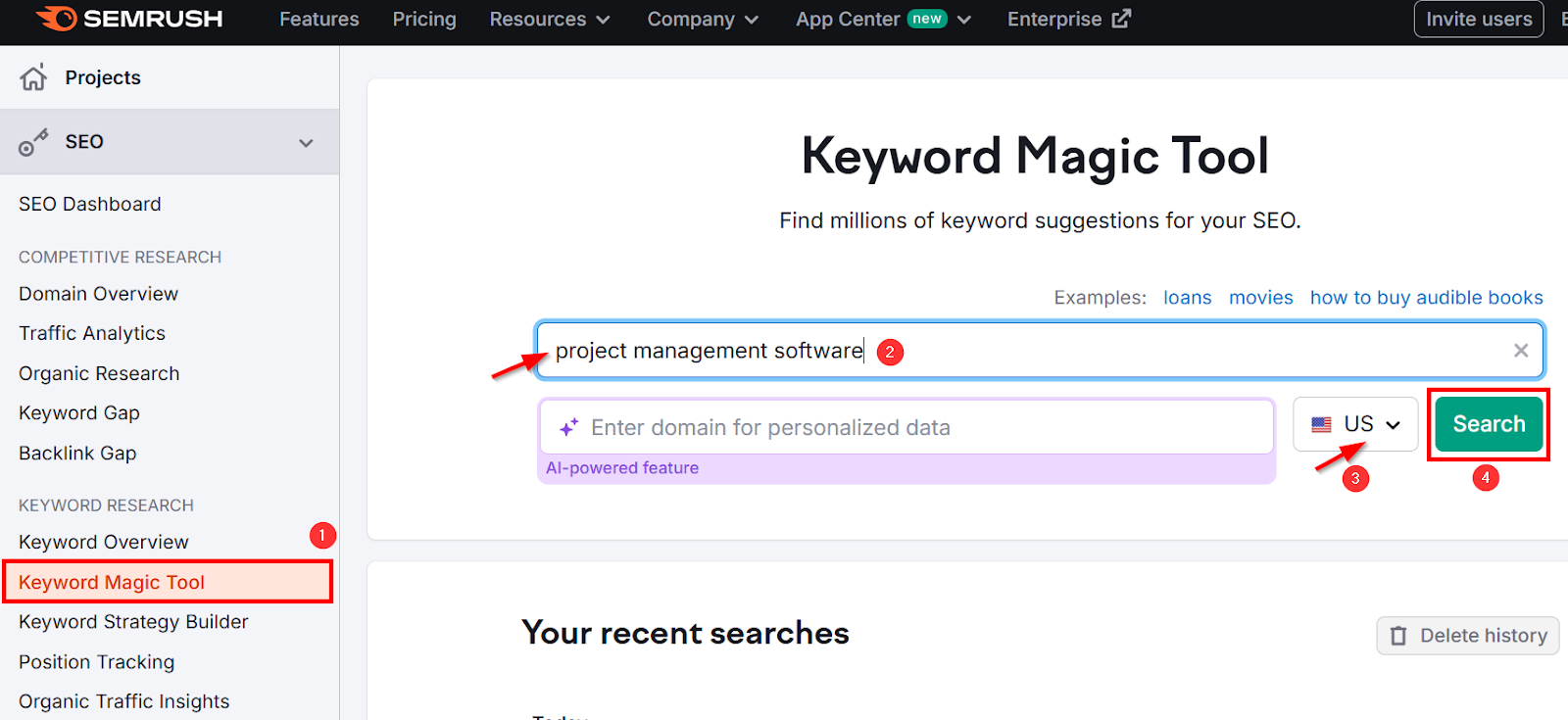
This will show you a list of keyword suggestions based on the term you entered, along with important metrics like Volume, KD, etc.
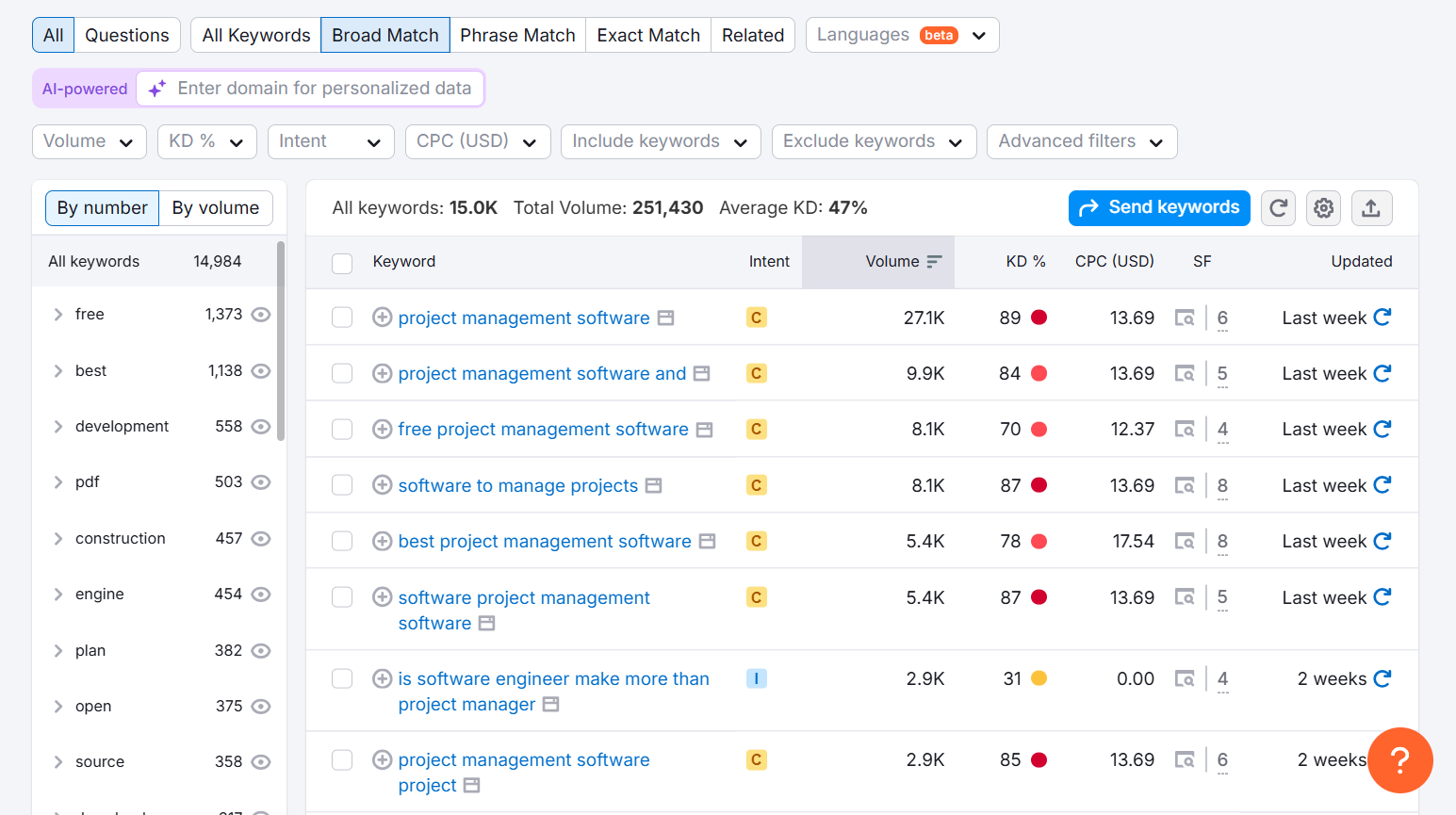
Since the KD score is very high in the top keywords, and there are about 15k broad matches, I’ll narrow down to keywords I have a better chance at ranking for (using filters on top of list).
Click KD% and select a lower difficulty range. Hit Apply.
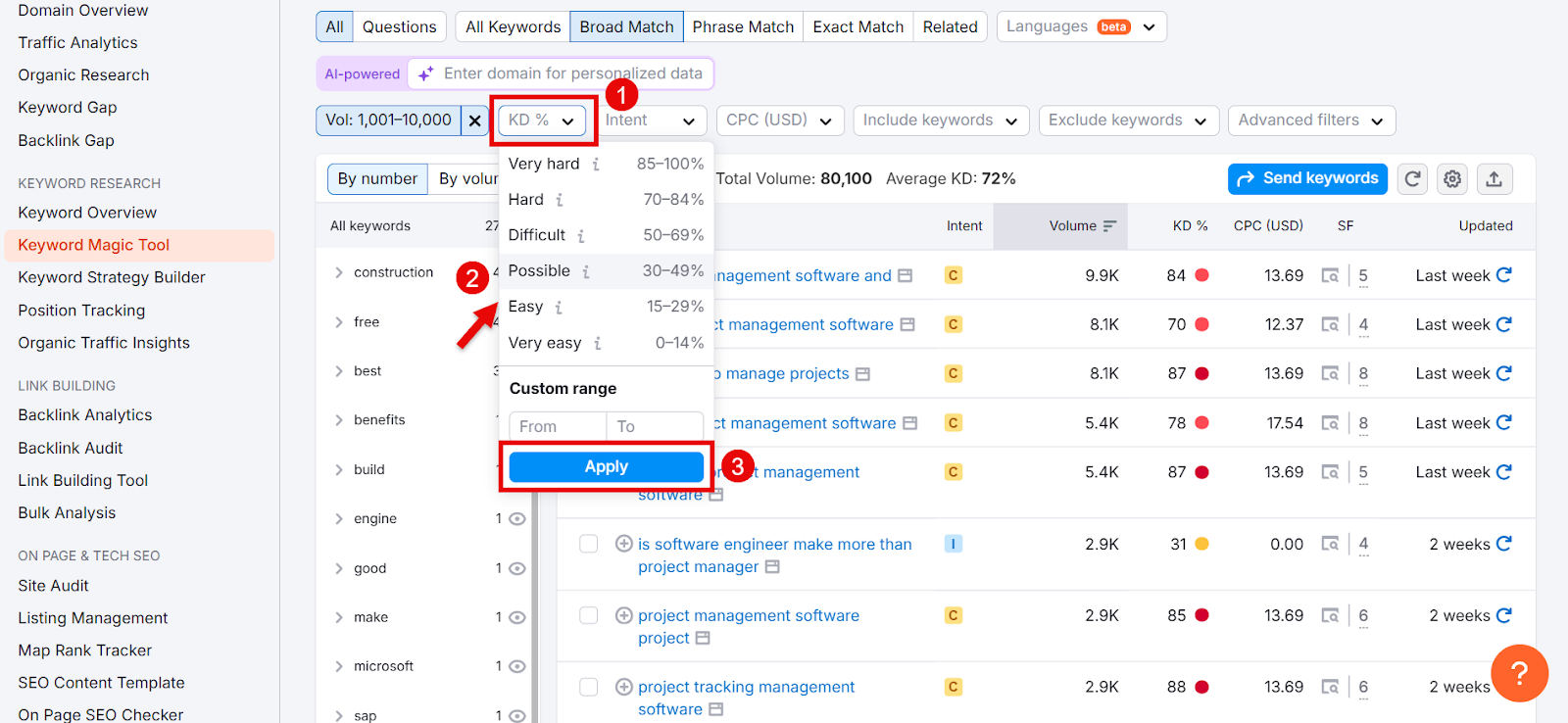
Next, go to the Volume filter and select a good-to-decent range (it’d be relatively easy to target such keywords). Click Apply.
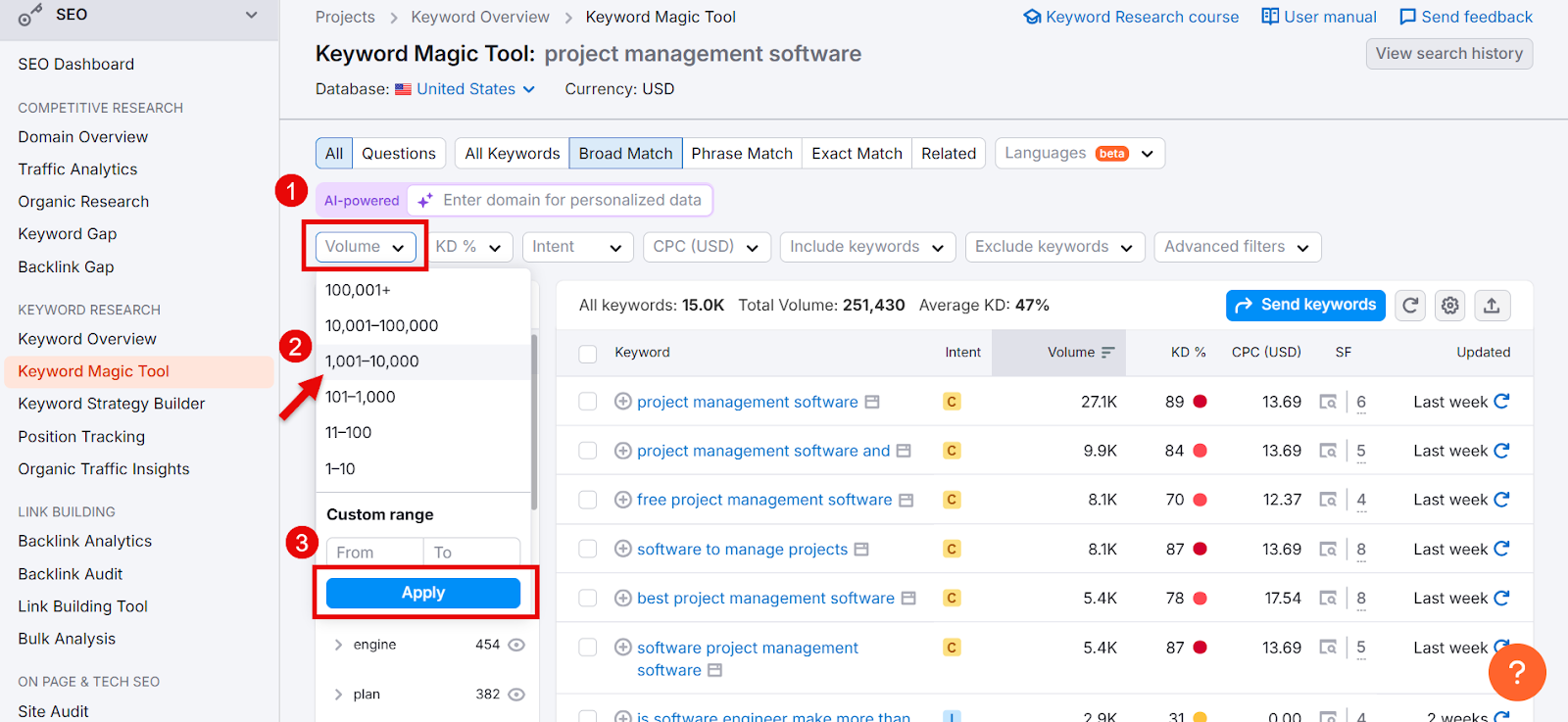
Fine tune these filters according to your needs and until you find a list of keywords you can actually target.
Select the relevant keywords, click Export and download in XLSX format.
Step 3: Analyze Competitor Keywords
a. Find Competitors on SERP
Your competitors are the domains that show up on the SERPs for your product/service related searches.
I opened one of the top results and instantly found some keyword ideas.
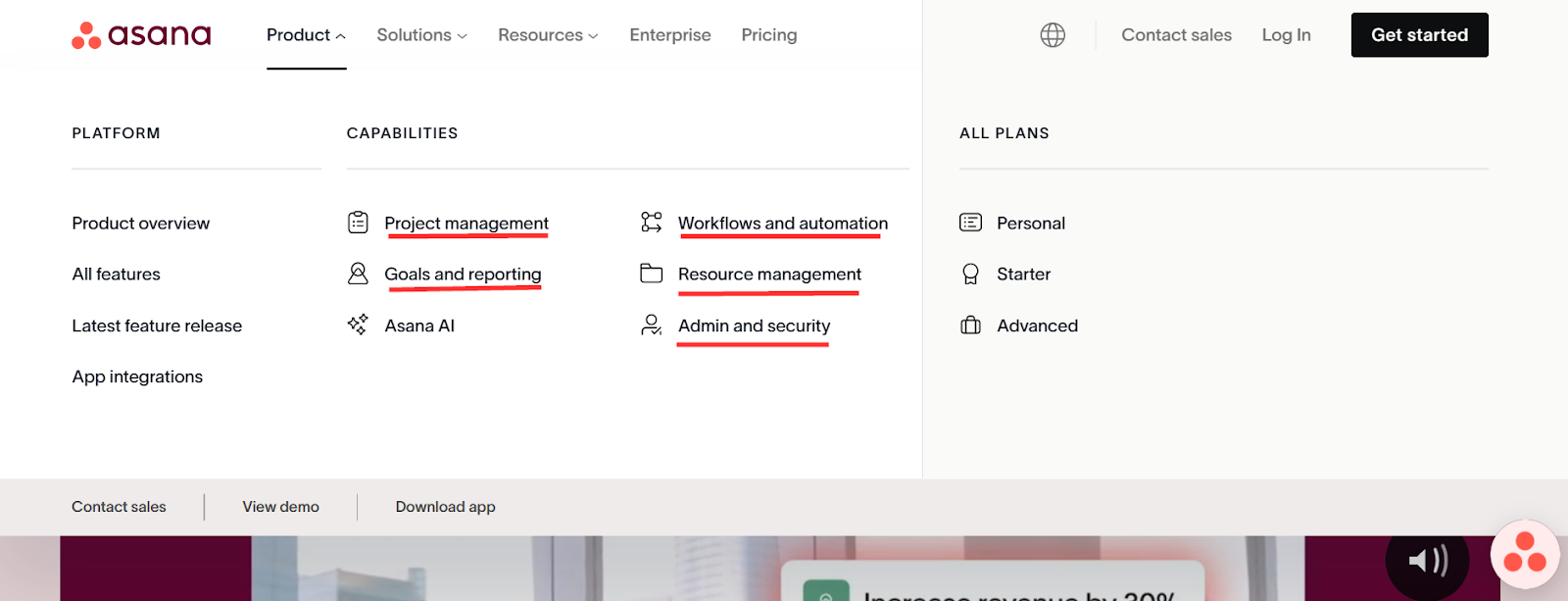
Take a note of all relevant keyword ideas. Look at product/service categories and see how the competitor is mentioning the same product/service as yours.
This way you can analyze your competitors’ websites to steal their keywords.
b. Find Competitors with Semrush
Google SERP can only give you a vague picture of who your competitors are. To make sure that I have a more meaningful picture of my competition, I use Semrush’s Organic Research.
Open Semrush’s Organic Research tool, enter your domain, make sure your target country is selected, then hit Search.
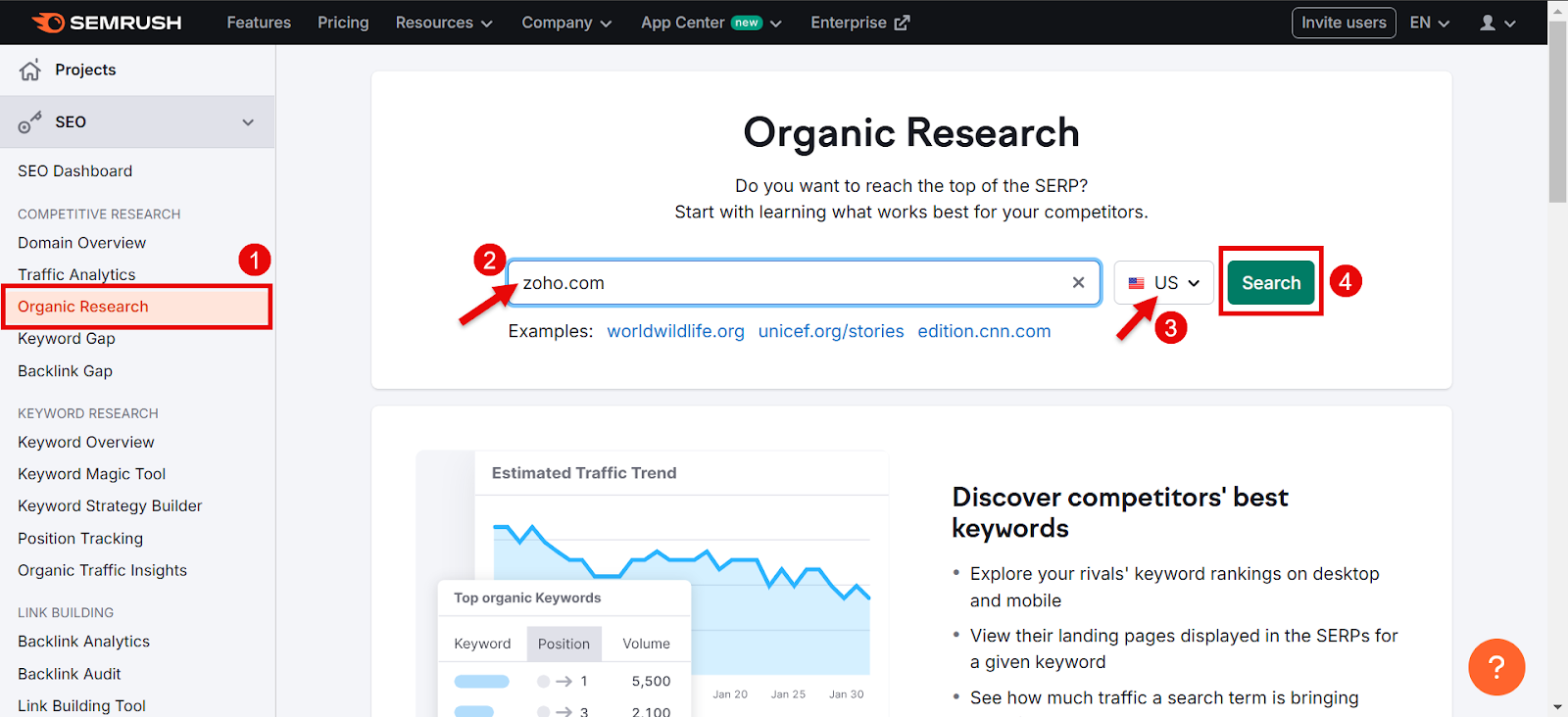
Select Competitors.
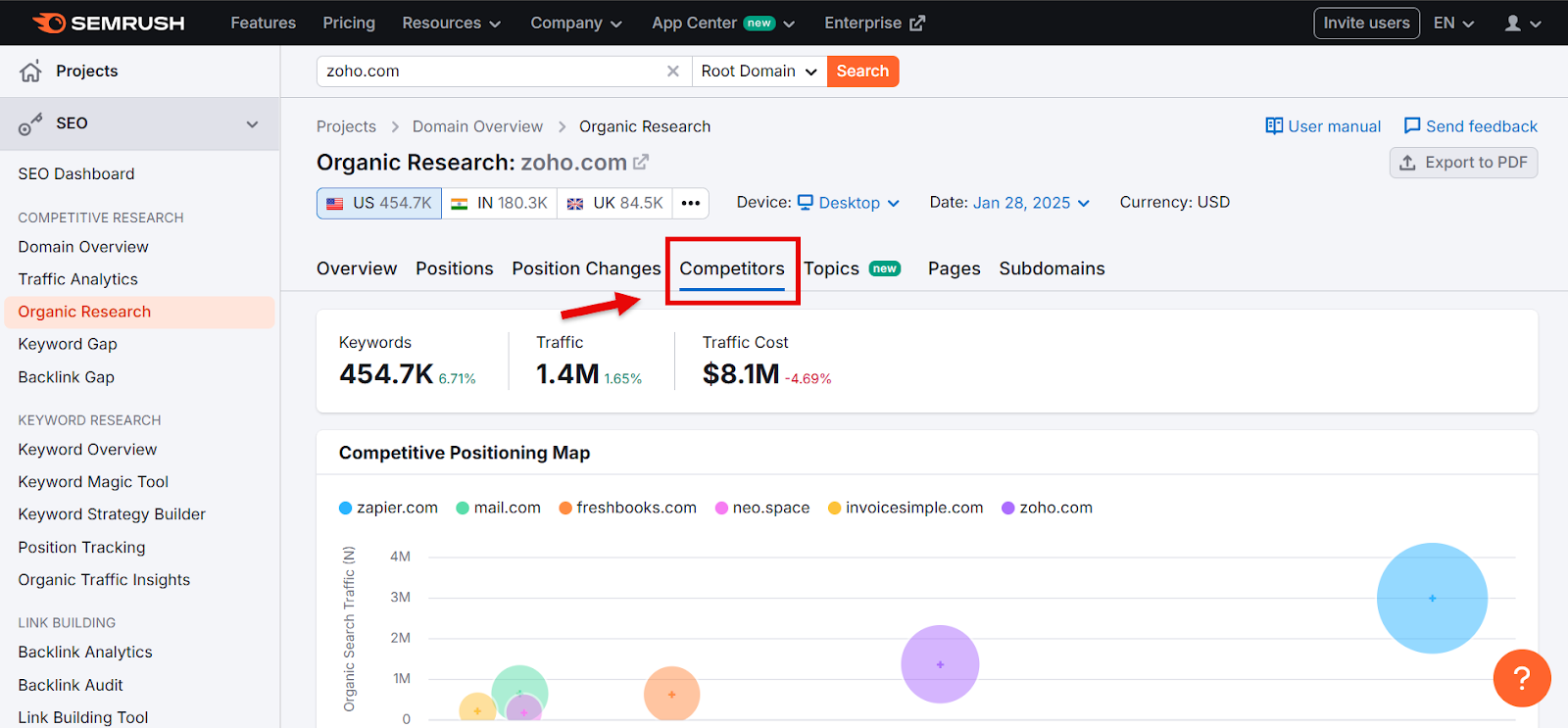
Scroll down to the list of Organic Competitors and you will find a list of your competitors in high to low competition order.
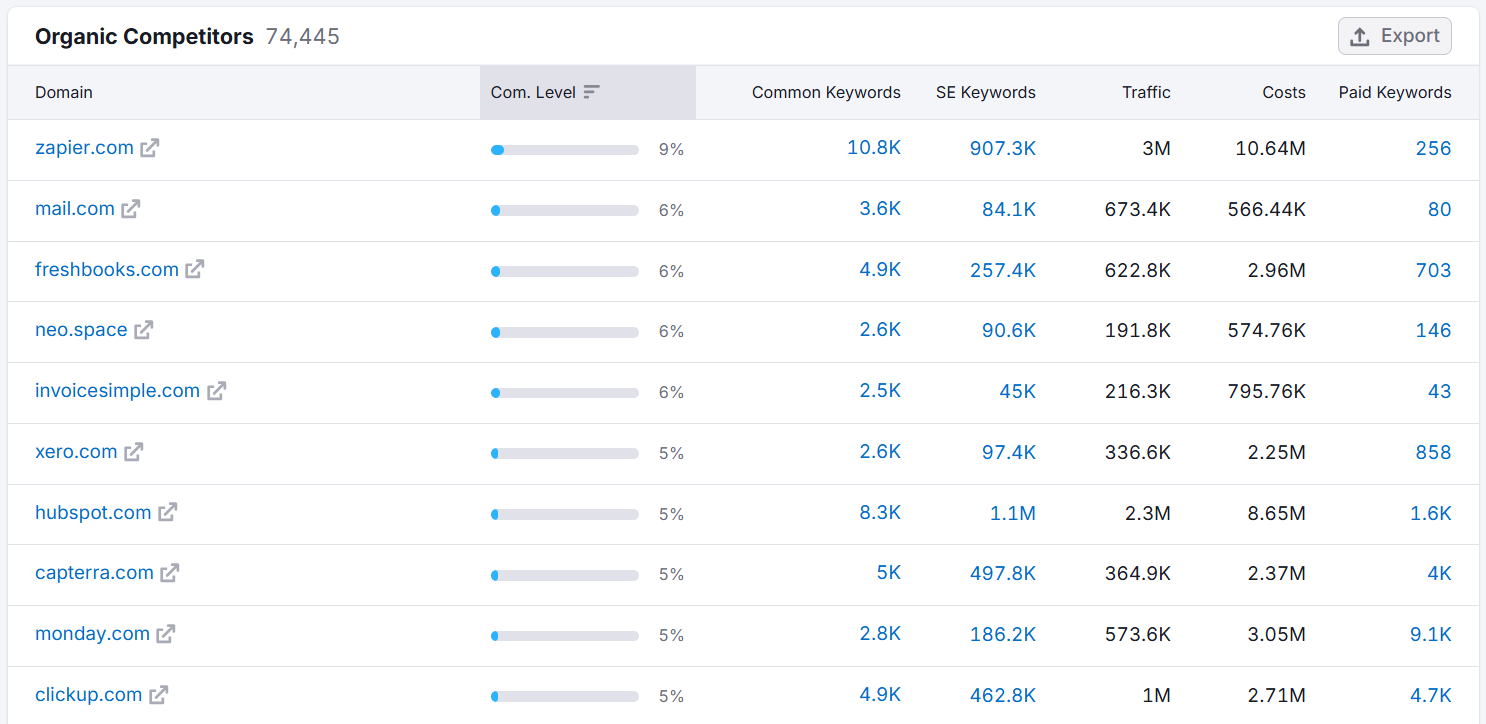
Take a note of the relevant competitors– the ones that have similar offerings and target customers as yours.
Once you have a list of competitors, it’s time to do keyword gap analysis. It helps you find keywords that your organic competitors are ranking for but you don’t.
c. Do Keyword Gap Analysis
Open Semrush’s Keyword Gap Analysis tool.
Enter your domain in the first box.
Add up to 4 most-relevant competitors’ domains in the next boxes.
Make sure the correct target country is select and hit Compare.
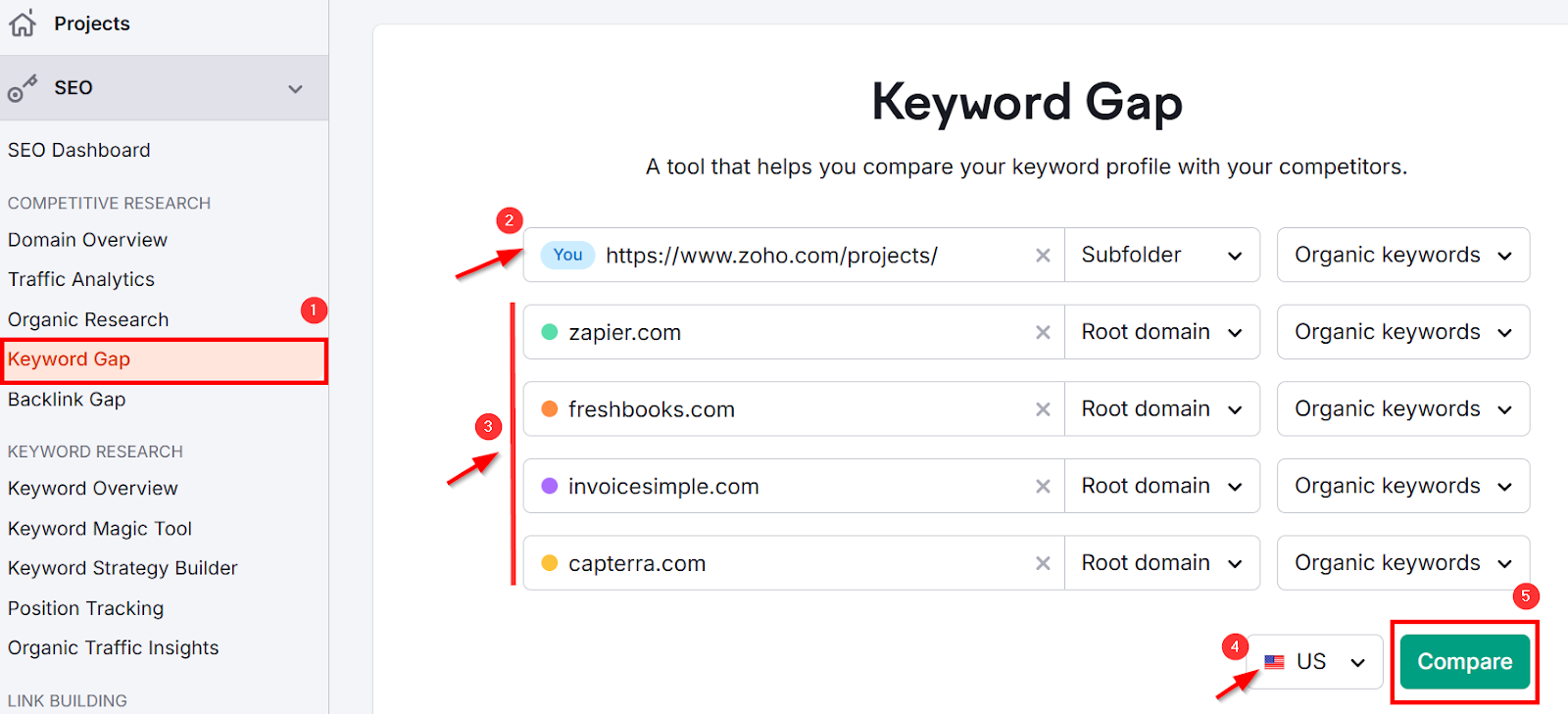
Take a note of the top opportunities for your domain. These suggested keywords have a good Search Volume to Keyword Difficulty ratio and you could likely rank for them easily.
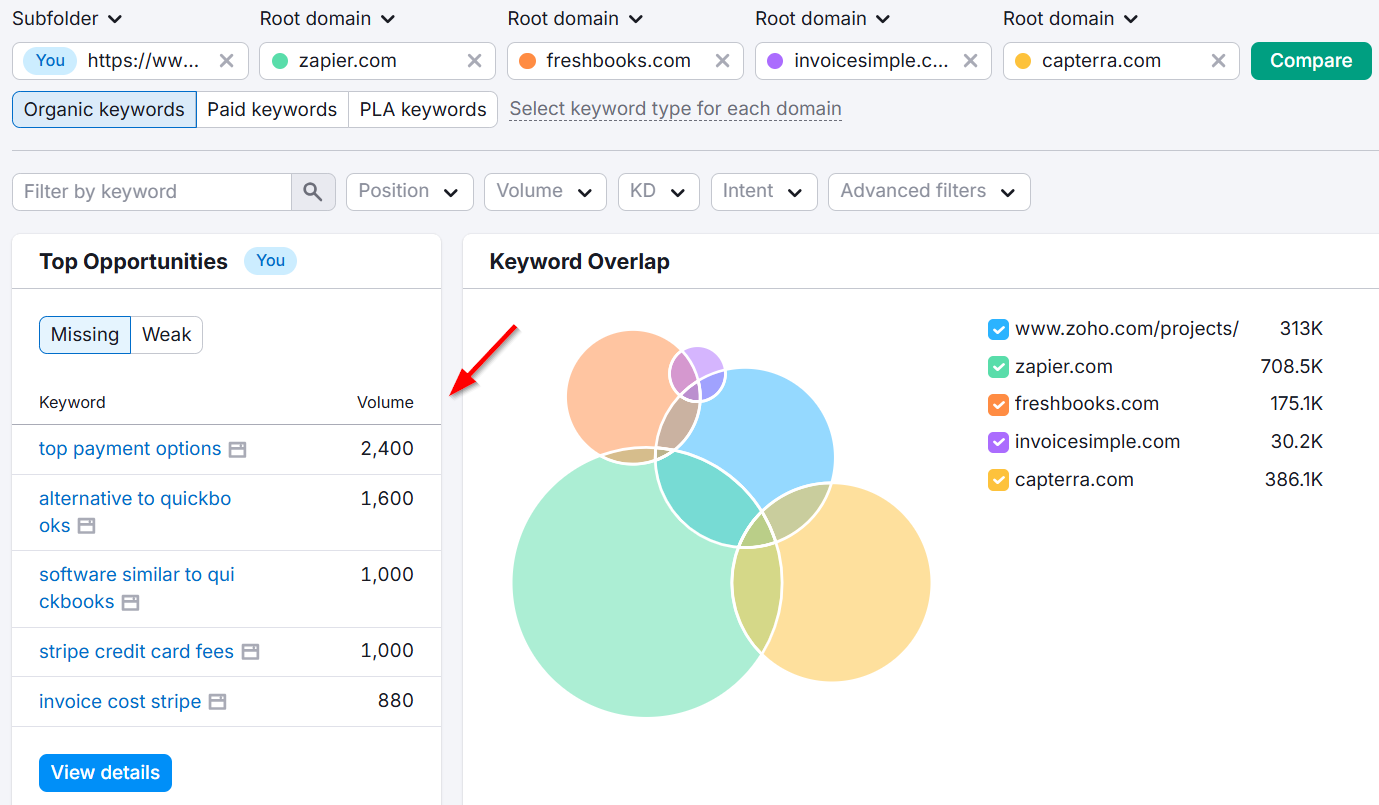
Scroll down for a comprehensive list of keywords and select Missing to find the ones that your competitors are ranking for but you don’t.
Use Volume and KD filters to find good volume and low competition (optional).
Select the keywords that resonate with your offerings.
Finally, click export and get them in an XLSX file.
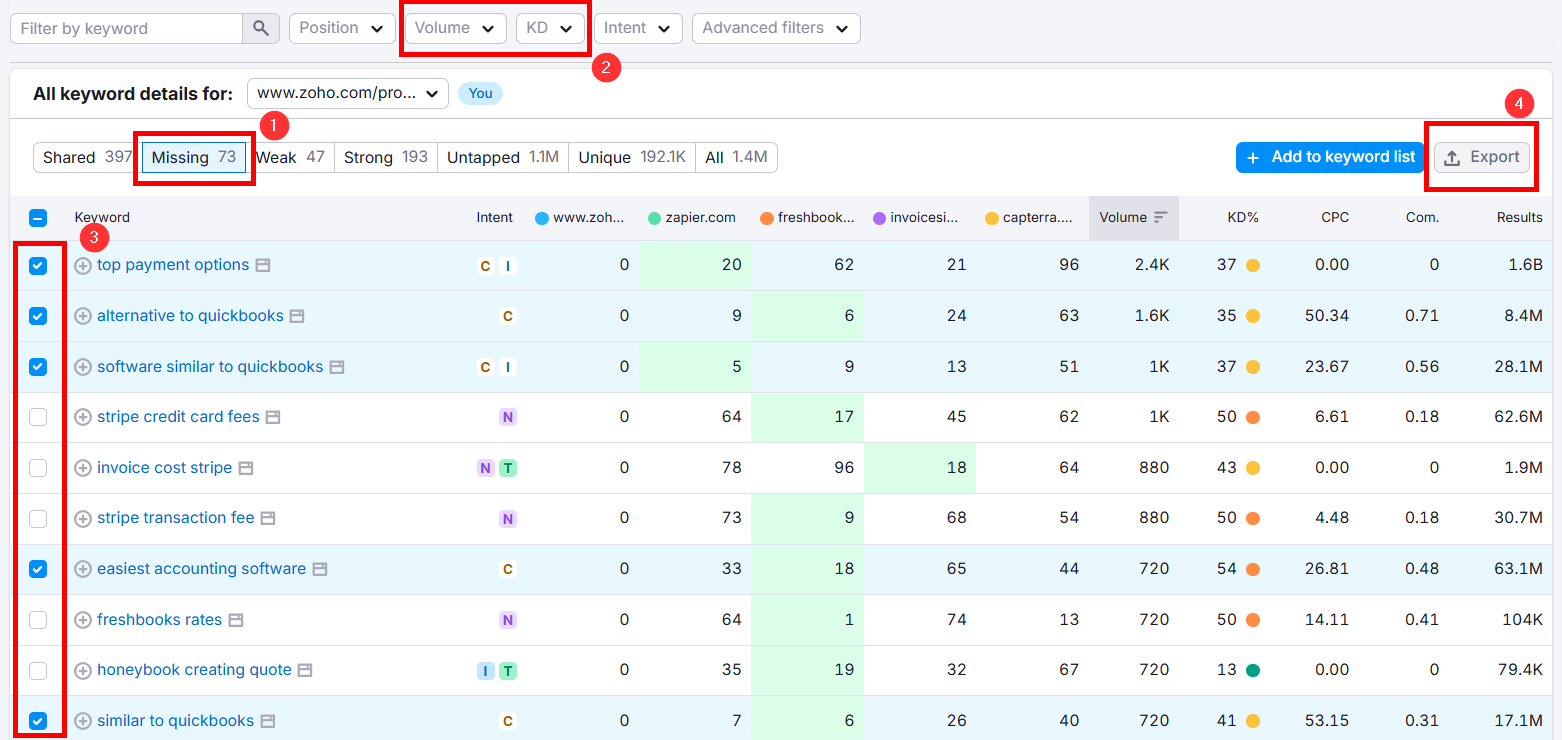
It’s a cheat code to find what’s already working for others in your industry and find untapped opportunities.
Step 4: Check Your Keywords with Semrush’s Keyword Overview Tool
At this point, you have a lot of keywords and want to narrow down to the ones that are actually valuable– while weeding out the keywords that you can’t rank for.
For this, open Semrush’s Keyword Overview Tool and enter that keywords you have found so far in the box (you can only enter up to 100 at once).
Make sure the target country is selected and hit Search.
This will give a clear picture of the potential of your keywords.
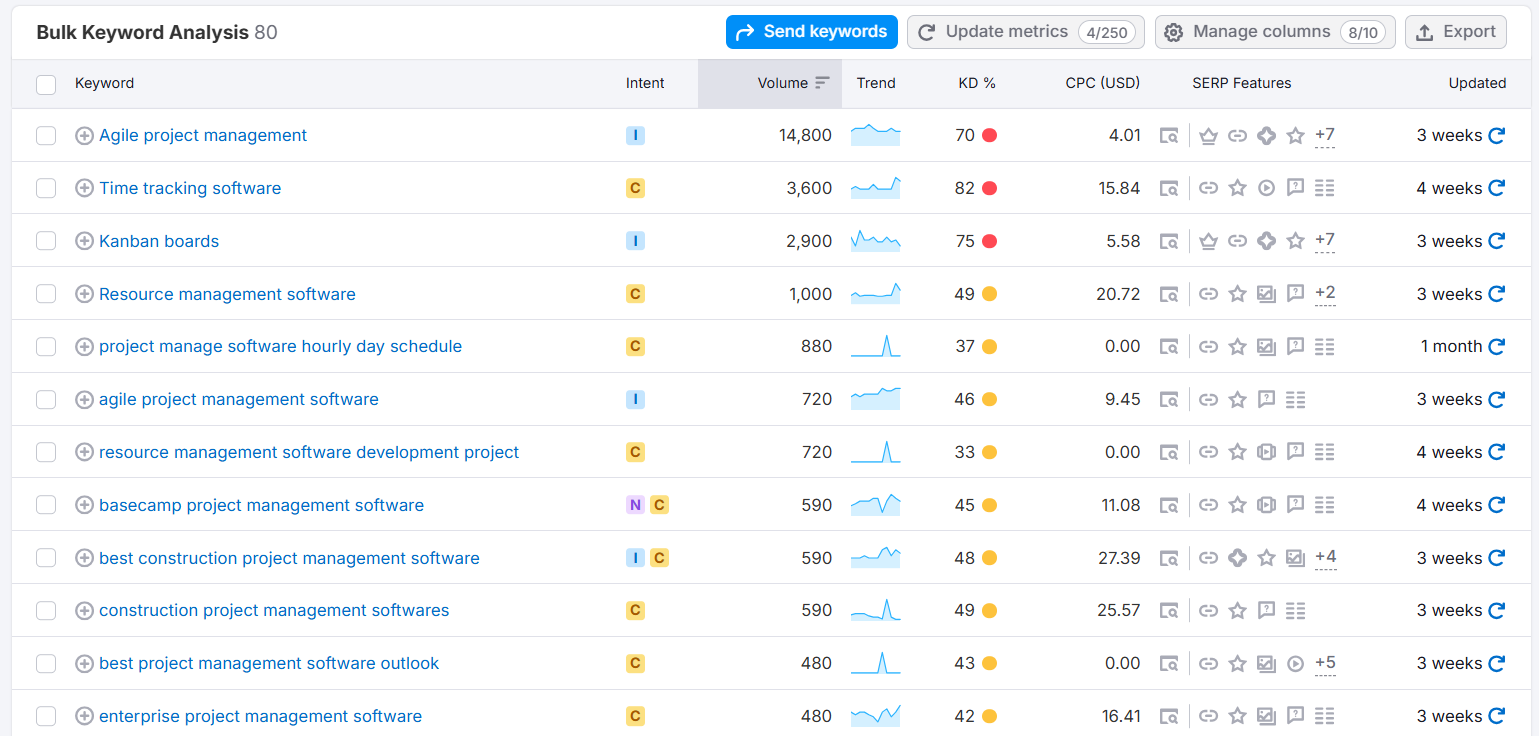
Now, select relevant keywords that have good to decent Volume and lower KD% and Export the list.
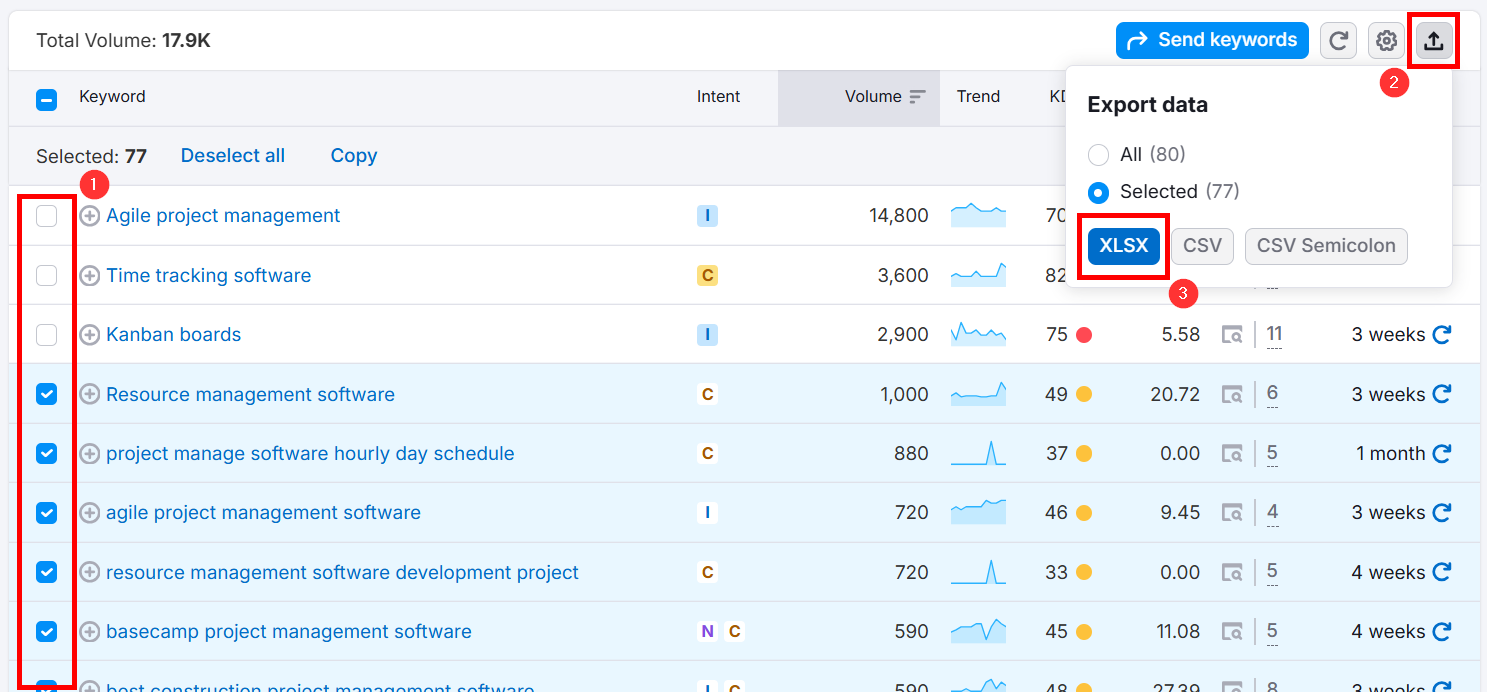
Remove unnecessary columns. Just keep Intent, Volume, and Keyword Difficulty.
This is what your list will look like:
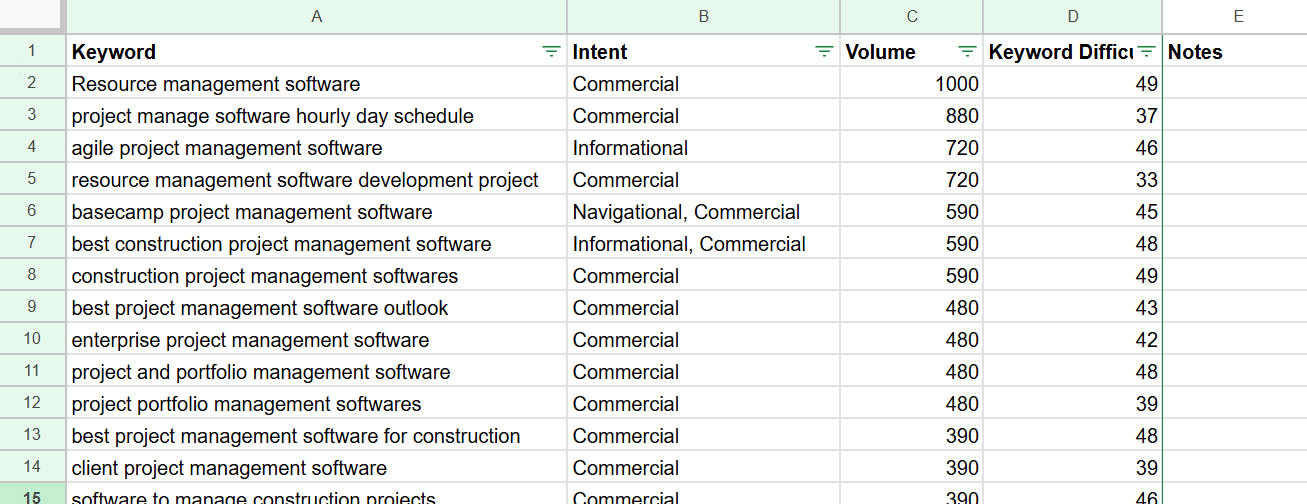
A Thing About Intent: For a B2B Business, You Want to Target All Search Intents.
Search intent is basically about the goal behind a searcher’s query. Categorizing your keywords according to search intent will help your business show up at the right places and the right time in front of your target audience during their buying journey.
You may already know this but here’s a quick overview of the 4 main search intent types:
↳ Informational: Queries like “what is,” “how to,” or “why.” | Content: Blog posts, guides.
↳ Commercial: Queries like “best,” “compare,” or “reviews.” | Content: Comparison articles, lists.
↳ Transactional: Queries like “buy,” “pricing,” or “services.” | Content: Landing pages, product demos.
↳ Navigational: Branded searches like “Semrush pricing” or “Slack login.”
B2B buyers typically research A LOT.
From the stage of awareness to consideration to finally making the decision– they take their sweet time going through the whole buying journey.
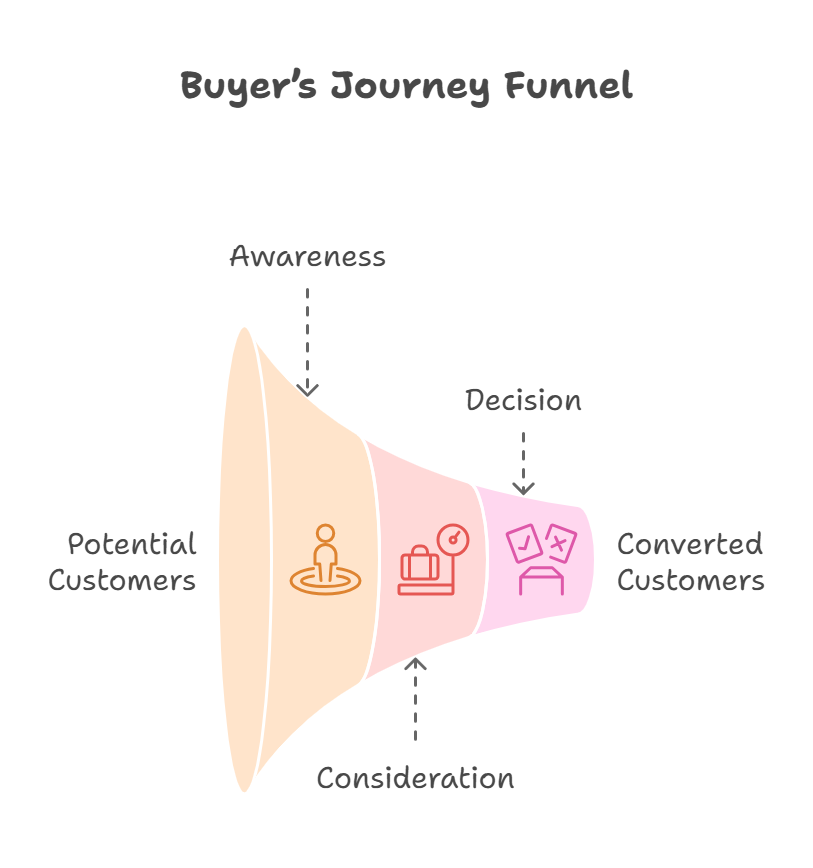
This is why getting the search intent right is important for targeting them effectively at each stage.
Step 6: Cluster Keywords and Map to Funnel Stages
At this point, I’d organize my keywords into clusters and align them with the sales funnel for effective content creation. This also helps ensure that my target audience finds the right content at the right stage of their buying journey.
a. Cluster Related Keywords:
Group keywords that are semantically or contextually similar into clusters. These clusters will help you build topical authority and create interconnected content.
For example, a cluster category “SaaS Cost Optimization” could include semantically or contextually related keywords like:
“reduce cloud costs”
“optimize SaaS spending”
“best SaaS cost tools”
b. Map Clusters to Funnel Stages:
Now, it’s time to assign each cluster to the appropriate stage of the buyer’s journey.
You want to consistently show up at all stages of your buyer’s journey. For example, if you are a project management software company, you want to show up when your target customer searches for:
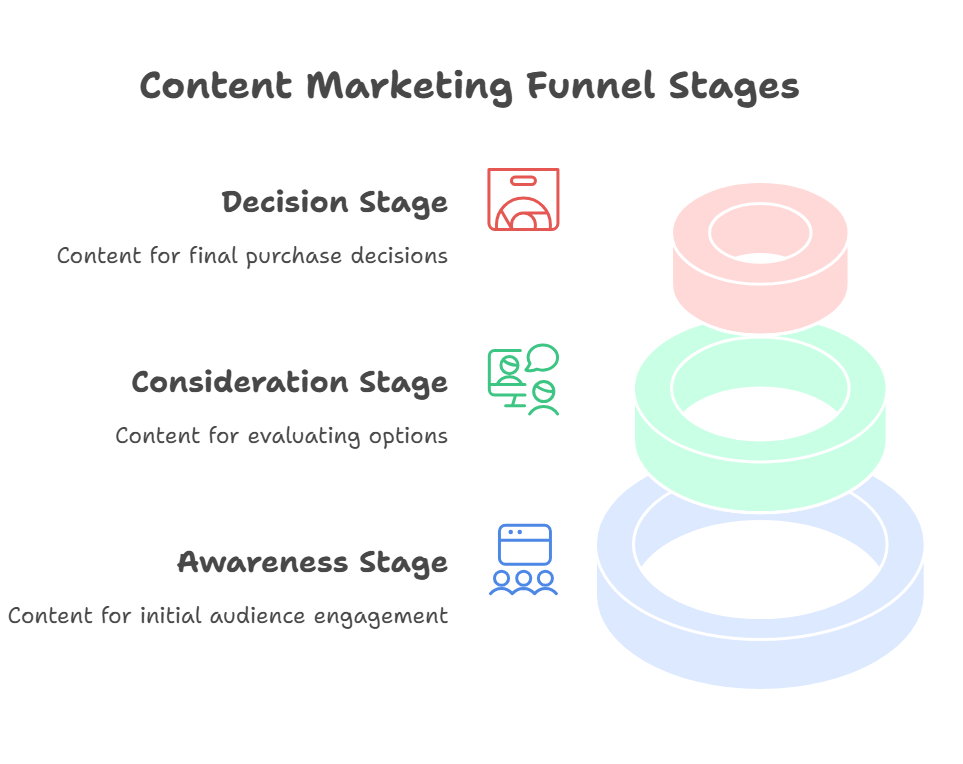
1. “what is a project management software” – This is Top of Funnel (ToFu) stage. Your target audience is looking for awareness-stage content like blogs, guides, or infographics. Use informational keywords here.
2. “top 5 project management tools” – This is Middle of Funnel (MoFu) stage. Focus on consideration-stage content such as webinars, comparison guides, or case studies.
3. “project management software free trial” – This is Bottom of Funnel (BoFu) stage. Target decision-stage keywords with product pages, testimonials, or free trials.
Step 8: Validate Keywords with SERP Analysis
Before committing to your keywords, analyze the search engine results pages (SERPs) to make sure your content matches what searchers expect.
When You Google a Target Keyword, Look for This:
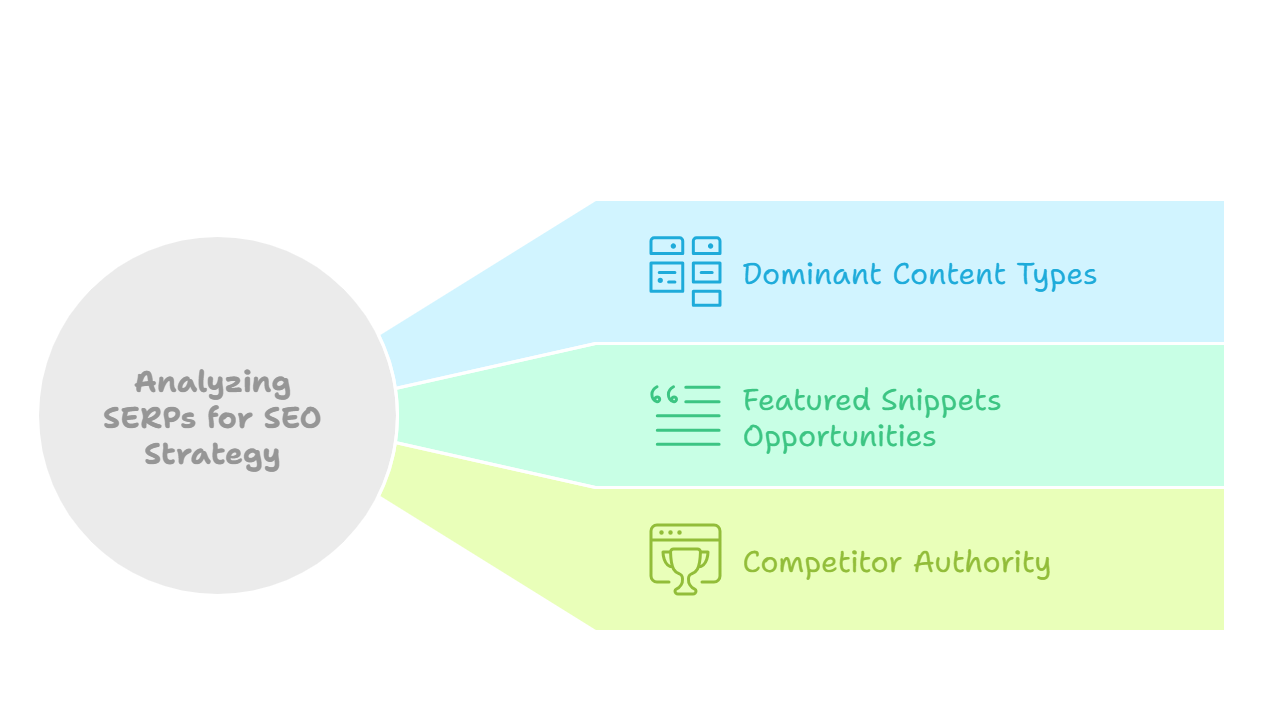
↳ Content Types: See which content type is dominating on the SERPs (e.g., blogs, videos, product pages). For example if a SERP is dominated by product pages, you should target commercial keywords.
↳ Featured Snippets: Look for opportunities to target questions from the “People Also Ask” section or featured snippets.
↳ Authority of Competitors: Evaluate the authority of top-ranking sites. Avoid competing against established brands– and if you do, target long-tail or less competitive variations of the keyword.
Pro Tip: Run a quick review of the top ranking results for your target keywords. Note what works (e.g., structure, format, tone) and tailor your content to outperform theirs.
Targeting the Right B2B Keywords
By following this guide, you will find highly valuable keywords for your B2B business. Target keywords throughout all 4 search intents so that you can show up at every step of your buyer’s journey.
And make sure to optimally implement your keyword research for the best results. If you’re researching keywords for SaaS, check out this tailored SaaS keyword research guide too.
Frequently Asked Questions
B2B keyword research focuses on low-volume, high-intent keywords that cater to specific industries and business decision-makers. In contrast, B2C emphasizes broader, high-volume keywords aimed at individual consumers. B2B also involves longer sales cycles, multiple stakeholders, and more complex queries reflecting organizational needs.
Yes, SEO is worth it for B2B because it helps businesses reach decision-makers who are actively searching for solutions. It drives targeted traffic, builds trust with potential clients, and generates high-quality leads for long-term growth.
The most important thing to look for when doing keyword research for B2B is search intent. Focus on keywords that reflect the needs of decision-makers, align with their goals, and match their stage in the buying journey.
I have found Semrush to be the best tool for B2B keyword research. It provides detailed data on search volumes, keyword difficulty, and competitive analysis, making it easier to identify opportunities and plan your strategy.
You can use internal search data for B2B keyword research by analyzing the queries your audience searches on your website. This data helps you identify content gaps and uncover potential keywords tied directly to their needs.
The B2B buyer’s journey plays a key role in keyword research by helping you map keywords to stages like awareness, consideration, and decision. This ensures your content addresses their needs at each step of the buying process.
You can find keyword ideas in conference agendas or industry events by analyzing session titles and descriptions. These often highlight current challenges and trends your audience is interested in, making them a great source for relevant keywords.
You can refine keywords for niche B2B audiences by using specific modifiers like job titles, industries, or solutions. Focus on long-tail keywords that address detailed queries, and use keyword research tools like Semrush to filter for low-competition, high-relevance terms.
Yes, you should target branded keywords for competitors in B2B by focusing on terms like “Competitor Name alternatives” or “Competitor Name pricing.” Just ensure your content is accurate, compliant, and provides real value.
Use customer pain points to guide your keyword research by helping you identify their challenges. Gather insights from customer interviews, reviews on platforms like G2, or forums like Reddit, and use these to create keywords focused on solving those problems.
Apart from Semrush, you can use Google Search Console to discover hidden opportunities. You can also use Google Trends to identify seasonal trends, and QuestionDB to find question-based keywords that align with your audience’s needs.
To see if you can compete for a specific B2B keyword, check the domain authority of ranking sites, analyze the content type on the SERP, and make sure your content provides more value than existing results.
You can balance targeting low-volume and high-volume keywords by prioritizing high-intent, low-volume keywords for niche audiences while including some higher-volume keywords to improve visibility during the awareness stage.
Clustering keywords is important in B2B SEO because it helps create related content around a central topic. This also improves internal linking, and makes it easier to plan content that’s in sync with different funnel stages.
You should revisit and refine your keyword strategy every 3-4 months. Apart from that, you should revise your keyword strategy if your product/service has got any new updates, or when competitors start to gain more traction. Regularly updating your strategy helps you stay relevant and updated with market changes.
Yes, Yelp can be good for B2B, especially for service-based businesses. Features like “Request a Call” or “Request a Quote” can help you generate leads and make it easy for potential clients to connect with you directly.

